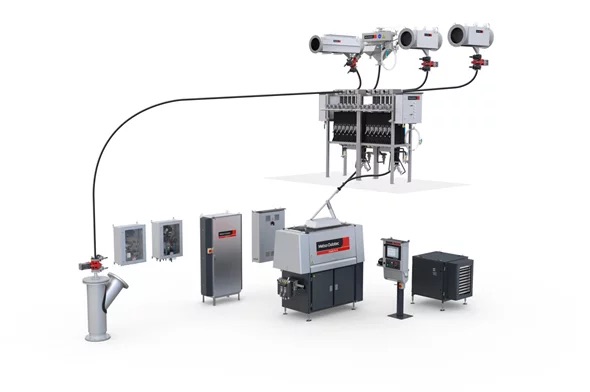Metso Outotec says it is extending its Courier product family with the introduction of Courier 8X SL analyser. The new analyser “maximises plant efficiency by enabling measurement of light elements with enhanced technology, while improving recovery and reducing impurity content in flotation circuits.” Laser-induced Breakdown Spectroscopy (LIBS) technology is used to measure both light and heavy elements for monitoring and control in mineral processing plants, enabling optimisation of concentrate impurity content while maintaining the best possible recovery.
The company says it allows accurate monitoring of changes in feed mineralogy, improved concentrate quality, improved recovery through early detection of process disruptions, reduced need for time-consuming and labour intensive manual sampling, and more efficient use of energy and raw materials.
In terms of what’s new compared to the Courier 8 SL, the new analyser uses the current best available technology with diode pumped laser and has improved temperature control, robustness, and serviceability. It has doubled the measurement speed and has a 30% shorter cycle time plus uses a next generation Courier X software platform. It also has additional connectivity features enabling remote support and calibration services and the use of Metso Outotec Metrics with KPI reporting to enable improved equipment availability. It also offers higher precision due to more stable slurry flow.Accurately monitor changes in ore type
Cited benefits are numerous – it can “control concentrate quality and minimise undesirable variations” and “reduce the cost of assaying and metallurgical sampling with automatic, consistent sampling and analysis around the clock.” It can also help improve recovery levels with early detection and rapid resolution of process disruptions. Users benefit from real-time process monitoring and control enabled by frequent assays. It speeds up process development with results from process tests and changes available more quickly plus you can easily upgrade and expand the system to meet changing plant requirements with the analyser system’s modular design.
Specific examples of its upside by commodity include in iron ore concentrators the online measurement of Si, Al, S, C, Mg, Ca, and other light element concentrations in feed and concentrate streams; supporting optimal product quality without compromising recovery. With nickel flotation from serpentinised ores it can be used for on-line measurement of Mg and other light element concentrations in feed and concentrate streams, again ensuring optimal product quality without sacrificing recovery. For laterite nickel concentrators it can be used for on-line measurement of Si, Al, Fe, and other light element gangue minerals in feed and concentrate streams.
In zinc and lead concentrators it can be used for on-line measurement of Si, Mg, Al, and concentrations of other light element gangue minerals in feed and concentrate streams. In sulphide gold concentrators it can measure S, As, and Fe in concentrate to optimise autoclave operation as well as sulphides in flotation tailings to monitor recovery. It can also measure carbon to optimise carbonaceous matter removal.
For phosphate concentrators it can help with final concentrate quality control: measurement of P content and Ca/P ratio; and with flotation recovery optimisation and reagent control: measurement of P in feed, concentrate, and tailings; plus measurement of penalty elements (Mg and Si). In lithium mining – for spodumene concentrators it enables final LiO2 grade control and recovery optimisation by Li measurement as well as measurement of Fe in the final product plus measurement of other light elements e.g. Ca, K, Mg and Na.











